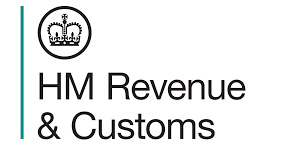HMRC SDLT: Guidance on Completing SDLT1 Form for Linked Property Transactions
SDLT1 Linked Transactions Guidance
This section provides detailed instructions on completing the SDLT1 form for linked transactions. Transactions are considered ‘linked’ if they are part of a single scheme or series between the same vendor and purchaser or connected persons. The guidance covers when to use a single SDLT1 form with supplementary forms or separate SDLT1 forms for each transaction, depending on specific criteria.
- Linked transactions are part of a single scheme or series.
- Answer ‘Yes’ if transactions are linked and provide total payment details.
- Use a single SDLT1 form for transactions with the same code, date, and parties.
- Separate SDLT1 forms are required if transactions differ in code, date, or parties.
- Apportion the total consideration fairly across transactions if a single price was negotiated.
- Retain evidence of apportionment for potential future inquiries.
“`

Read the original guidance here:
HMRC SDLT: Guidance on Completing SDLT1 Form for Linked Property Transactions
SDLT62080 – Processing: Guidance for Completing SDLT1 Forms and Linked Transactions
Understanding Linked Transactions
To determine whether transactions are linked, it is essential to understand that linked transactions are part of a single scheme or arrangement involving the same buyer and seller, or their related parties. If any transaction is connected to another, you must confirm this when completing your SDLT1 form.
– If transactions are linked, answer ‘Yes’ and include the total money paid across all linked transactions, including VAT.
– If the transactions are not linked, respond with ‘No’ and leave the remainder of question 13 blank.
Methods for Notifying Linked Transactions
You can inform HMRC about linked transactions using two different methods:
Method 1: Single SDLT1 Form with Supplementary Forms
This method applies when all linked transactions meet these criteria:
– They fall under the same code at question 2 of the SDLT1 form (options A, F, L, or O).
– They have the same effective date.
– The buyers and sellers are the same for each transaction.
– In question 9 of SDLT1, either:
– No reliefs are claimed, or
– All the transactions claim the same type of relief.
Steps to Complete a Single SDLT1 Form:
1. Provide details for the primary transaction on the SDLT1 form.
2. Indicate the full consideration (total money paid) for all linked transactions in questions 10 and 13.
3. State the total tax due on all transactions in question 14.
4. Enter the total number of properties involved in question 26.
5. Fill in the address details for the main transaction from question 27 onwards.
6. Use supplementary forms (e.g., SDLT3 or SDLT4) to provide details for additional linked transactions.
Specific Instructions for Codes:
– For transactions under Code F or O: Include the total amount for all linked exchanges in questions 10 and 13.
– For those under Code A:
– Include relevant lease information from questions 16 to 21.
– For those under Code L:
– Leave questions 10 and 11 blank.
– Include details about the lease from questions 16 to 25.
Method 2: Separate SDLT1 Forms for Each Transaction
This method is required when at least one of the following conditions applies:
– The transactions do not share the same code at question 2 or 3.
– The transactions have different effective dates.
– The buyers and sellers differ for at least one transaction.
– Some transactions claim relief while others do not.
– Different types of relief claims are applied requiring distinct codes in question 9.
Steps to Complete Separate SDLT1 Forms:
1. For each SDLT1, show the consideration solely for that particular transaction in question 10 for codes A, F, or O, and in questions 22 or 23 for Code L.
2. Display the total consideration for all linked transactions in question 13 on each individual form.
3. Calculate the stamp duty land tax (SDLT) based on the figure shown in question 10 and apply the correct tax rate.
4. Show the tax due specifically for that transaction in question 14 on each SDLT1.
Apportionment of Chargeable Consideration
When multiple linked transactions have a single agreed price, it is essential to distribute that price fairly among all transactions based on a reasonable estimation.
– You do not need professional evaluations for this process.
– The buyer can provide an estimated distribution of values related to each transaction.
– Keep documentation of how the split was determined, in case the HMRC asks for clarification on your submissions in the future.
Example Scenarios
Here are a few examples to clarify how to handle linked transactions:
Example 1: Multiple Properties in the Same Scheme
Suppose you are buying three properties from the same seller and all the transactions are under the same code (Code F) with identical buyers.
– Complete one SDLT1 form for all transactions.
– Indicate the total amount paid for all properties in questions 10 and 13.
– Provide the tax owed for the total amount in question 14.
– List the total number of properties as three in question 26.
Example 2: Different Codes for Each Transaction
If you purchase one property under Code A and another one under Code L from the same vendor:
– You must fill out two separate SDLT1 forms.
– For the property under Code A, indicate consideration and tax in the relevant questions and likewise for Code L.
– In each form, note down only the consideration related to that particular transaction in question 10 and the total of linked transactions in question 13.
Example 3: Relief Claims Differed
Suppose one transaction qualifies for relief while others do not:
– You would need separate forms as not all transactions share the same relief type.
– Show only the relevant figures in each transaction-specific SDLT1, including questions 10 and 13 for each instance.
Further Guidance
For detailed instructions regarding connected individuals, refer to Section 1122 of the Corporation Tax Act 2010. This section outlines how relationships affect the treatment of transactions, which is vital when determining if transactions are linked.
Make sure to have all necessary details on hand when filling out the SDLT1 form, as accurate information is key to ensuring compliance with HMRC regulations.







